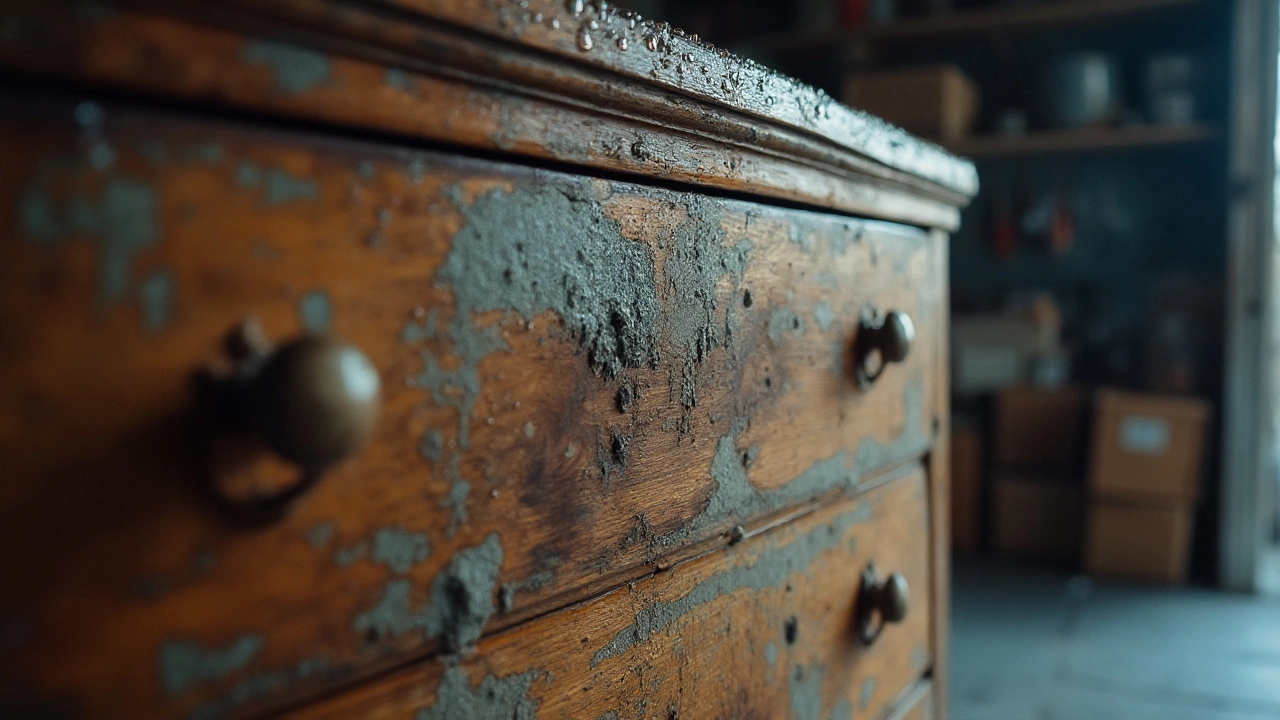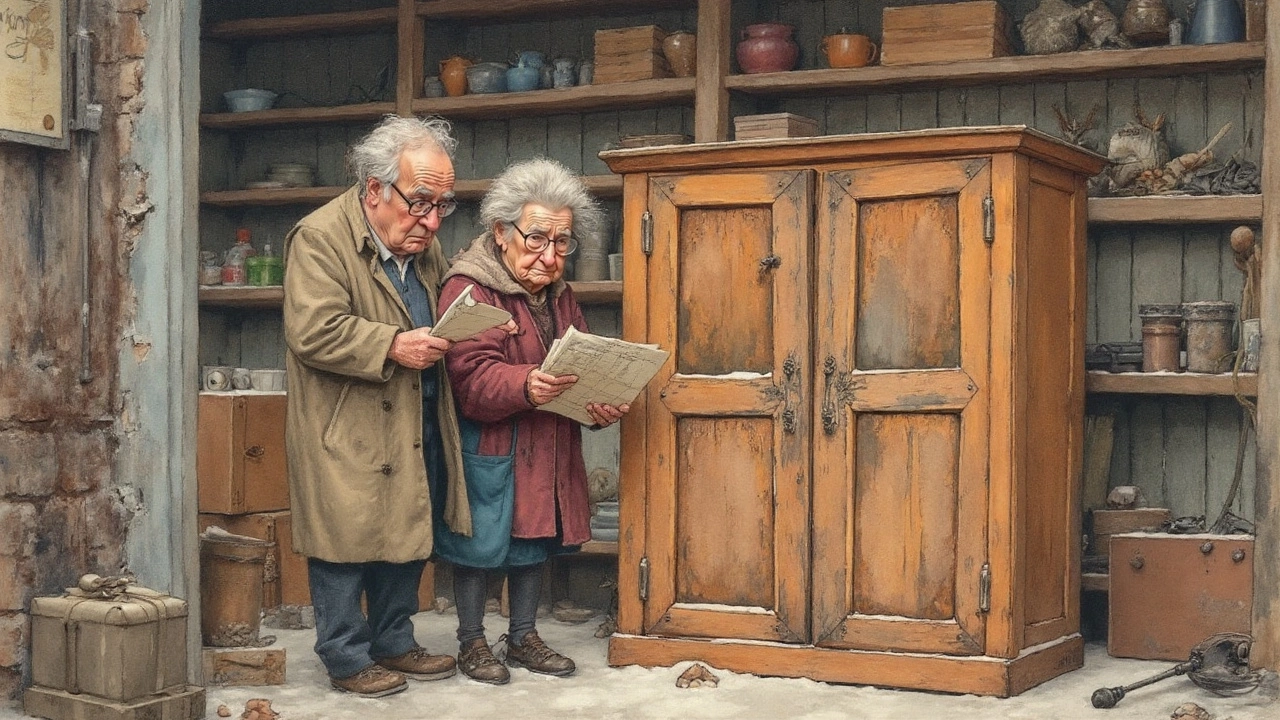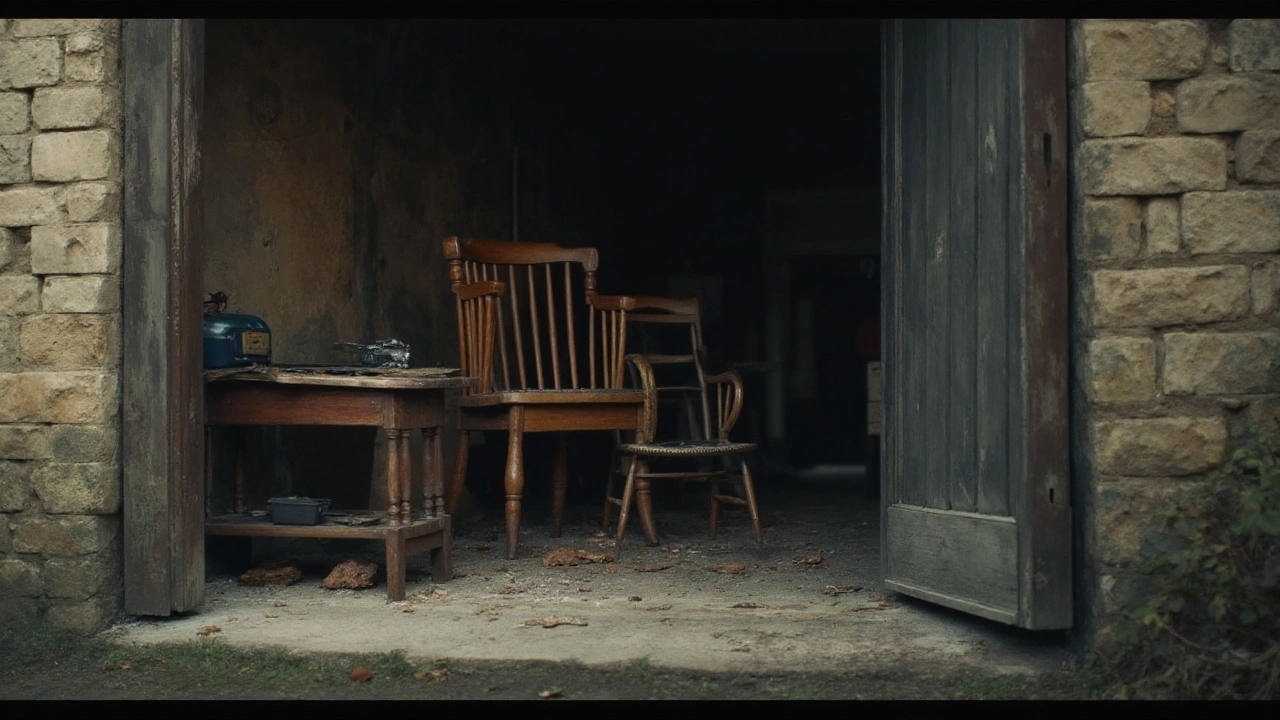If you’ve stared at that bulky dresser and wondered if your garage is the answer, you’re not alone. The idea sounds perfect: extra space, out of the way, no more tripping over grandma’s antique rocking chair. But here’s the kicker—wood and garages are not always the best friends. Stick around, because I’m about to spill the real deal on what can happen when you store wood furniture in an unheated garage, and how to sidestep the worst disasters.
What Happens to Wood Furniture in an Unheated Garage?
Your unheated garage isn’t just chilly in the winter. It’s a place where wild temperature swings and dampness take center stage. Wood, being a porous material, just can’t mind its own business—it absorbs and releases moisture from the air. In an unheated garage, that means trouble starts pretty fast. Hot summer air pushes moisture into the wood, while cold dry spells suck it out. Over time, this yo-yo effect warps, cracks, swells, and even splits your once-smooth furniture. The stats back it up: a 2016 University of Minnesota study measured that wood absorbs up to 20% more moisture when stored in uncontrolled garage settings versus indoors.
Think about knots in your old table legs or the veneer peeling up on an old desk. That’s often just the result of wild humidity. Add freezing temperatures to the mix, and glue joints start to fail, leaving chairs wobbly and cabinet doors hanging crooked. Mold and mildew love this party too—one rainy week and you’ll spot fuzzy white or black patches under seats and inside drawers. Do you want your solid oak sideboard reeking like an old gym locker? Didn’t think so.
Most garages aren’t designed to keep out moisture, either from the air or creeping up from a cold slab floor. According to the U.S. Department of Energy, concrete garage floors can wick up groundwater, spiking indoor humidity by up to 35% at ground level. That spells trouble for anything wood that touches the floor—even furniture with metal or plastic legs isn’t safe for long. Rust develops, then slowly eats away at fittings and hardware. On the other hand, winter cold can turn wood brittle. Ever heard the snap of a chair rung in deep January? That’s the moisture in wood contracting and freezing. No fun, especially if the piece is special or has sentimental value.
| Damage Type | Main Cause | Signs | Timeframe |
|---|---|---|---|
| Warping/Cracking | Moisture Swings | Bent wood, Splits | 1-6 months |
| Mold/Mildew | High Humidity | Black/white spots, Odor | 2-12 weeks |
| Metal Rusting | Damp Floor/Air | Rust marks, Loosened joints | 2-12 months |
| Glue Failure | Temperature Fluctuations | Loose joints, Peeling veneers | 1-12 months |
Even more, there’s the bug factor—unstable garage climates attract wood-boring insects, especially if you don’t use your garage much. Powderpost beetles and termites can move in without warning, and the damage isn’t always visible right away. This is not just bad news for the one piece—an infested item can spread issues to other stored furniture. Bottom line: an unheated garage is a tough environment for wood, even tougher than for metal, plastic, or fabric items. Unless you take action, you’re playing roulette with your furniture’s lifespan.

How to Minimize Damage When Storing Wood Furniture
Okay, maybe you can’t avoid the garage—sometimes there’s really nowhere else to put the dining table during that endless kitchen remodel. So, how do you keep your wood furniture safe despite the odds? First, get everything off the floor. Elevate furniture on pallets, bricks, or sturdy boards to keep it away from the cold, damp concrete. Simple trick, but it prevents capillary moisture and bugs from sneaking in.
Wrap your pieces—but not in plastic. Plastic sheeting traps moisture, basically marinating your furniture in humidity. Instead, use old cotton blankets, moving pads, or breathable tarps. These allow air to circulate while keeping dust at bay. Want a pro tip? Slip a few packets of silica gel under seats or inside drawers. These little packets are moisture magnets, snatching up whatever dampness sneaks through.
Humidity is the real villain here. Get a cheap digital hygrometer—seriously, you can find one online for under $20—and keep an eye on the moisture levels in your garage. If it routinely spikes above 60%, consider plugging in a dehumidifier, at least during wet weather. You don’t need to turn your garage into a museum, but every bit helps. Some folks even run a small space heater to take the chilly edge off in winter, though you have to weigh that against your energy bill and garage safety.
Use furniture wax on wood surfaces for a little extra protection. This helps to lock in moisture and form a harmless barrier against the worst air swings. Old-school beeswax polish works well and smells pleasant. Make sure drawers, cabinet doors, and lids are slightly ajar so air can circulate inside—otherwise, trapped air can get musty fast. Want to be extra safe? Take apart what you can. Unbolt table legs and remove shelves so each part has room to flex without stressing glue joints or hardware.
If your garage is prone to flooding or spring meltwater, think twice about storing anything valuable out there, no matter how careful you are. Remember that bugs, especially termites and beetles, can find even a tiny crack to slip in. Store furniture in a part of the garage that gets the most sunlight and air, not right against damp outside walls. Sweep regular and check for droppings, sawdust, or weird smells—early detection is half the battle if you’re up against pests or mold.
If you have several pieces to store, leave space in between. Crowded furniture doesn’t dry properly, so moisture lingers and feeds mildew. Furniture finish matters too—solid hardwood is more resistant than particle board, which can balloon, crack, or fall apart after even a short stay in a wet garage. Give extra love to glued joints and any exposed wood end-grains; these are spots where moisture gets in fastest.
Here’s what Greg MacLachlan, wood conservation expert at The Smithsonian, says:
“It’s critical to allow furniture to ‘breathe’ and to monitor both temperature and humidity closely; many antiques fall apart due to improper attic or garage storage.”So, paying attention now saves you the pain of sanding, gluing, or even tossing out your favorite heirloom down the line.
- Elevate every item away from direct contact with the floor.
- Wrap pieces in breathable fabrics, not plastic.
- Keep tabs on humidity with a hygrometer.
- Use wax polish for a moisture barrier.
- Let air circulate around and inside each piece.
- Break down items if possible for safer storage.
- Avoid storing furniture against exterior walls.

Storing Wood Furniture Long-Term: Smart Choices and Realistic Expectations
Maybe you need to store furniture for a few weeks, or maybe it’s going to be months on end. The longer wood sits in your unheated garage, the more it soaks up its environment. You might not see issues right away, but long-term, things add up. Even the *best* protected pieces can slowly suffer warping, loosening, and odors after six months to a year. Fast fact: the Canadian Conservation Institute reports that wood exposed to uncontrolled temperatures shifts shape by up to 1 mm per 30 cm of span after a typical winter in a cold storage area. Not visible unless you measure, but enough to throw cabinet doors or drawers out of alignment.
Before you stash anything away, shell out a couple hours for a detailed inspection. Clean, repair, and wax everything. If you spot old bug damage—tiny holes, crumbly wood, or fine sawdust—seal the item in a plastic bag outside and call in pest control before it joins your collection. Documenting the condition with snapshots can save you headaches if you need to check for later damage.
Don’t forget about security. Unheated garages can tempt thieves, especially if valuable-looking pieces are visible from the outside. Move the most precious stuff further from the door and out of sight of neighbors or passersby. For added peace of mind, install simple cameras or motion lights—not just for burglars, but also for keeping an eye on possible moisture leaks or pest invasions.
If your garage just isn’t cutting it, look around town for climate-controlled storage units. They’ll cost you a monthly fee, usually between $60 and $200 depending on where you live and the size you need. This can be a real life-saver for any high-value furniture—antiques, inherited pieces, or anything handmade. The consistent heat and humidity in these places protect against nearly all the nasties that would tear up your stuff in less controlled spaces. But, if that’s not in your budget, just doubling down on in-garage precautions will give your wood furniture a fighting chance.
At the end of the day, storing wood furniture in an unheated garage is a bit of a risk, but it’s manageable with good habits and some cheap gear. The more you know about what’s happening in your garage climate, the better you can keep that beautiful table, bed, or cabinet in shape for years to come. So, yes—go ahead and use the space if you must. Just go in with open eyes, checked humidity, and a few towels and silica packs in hand.



